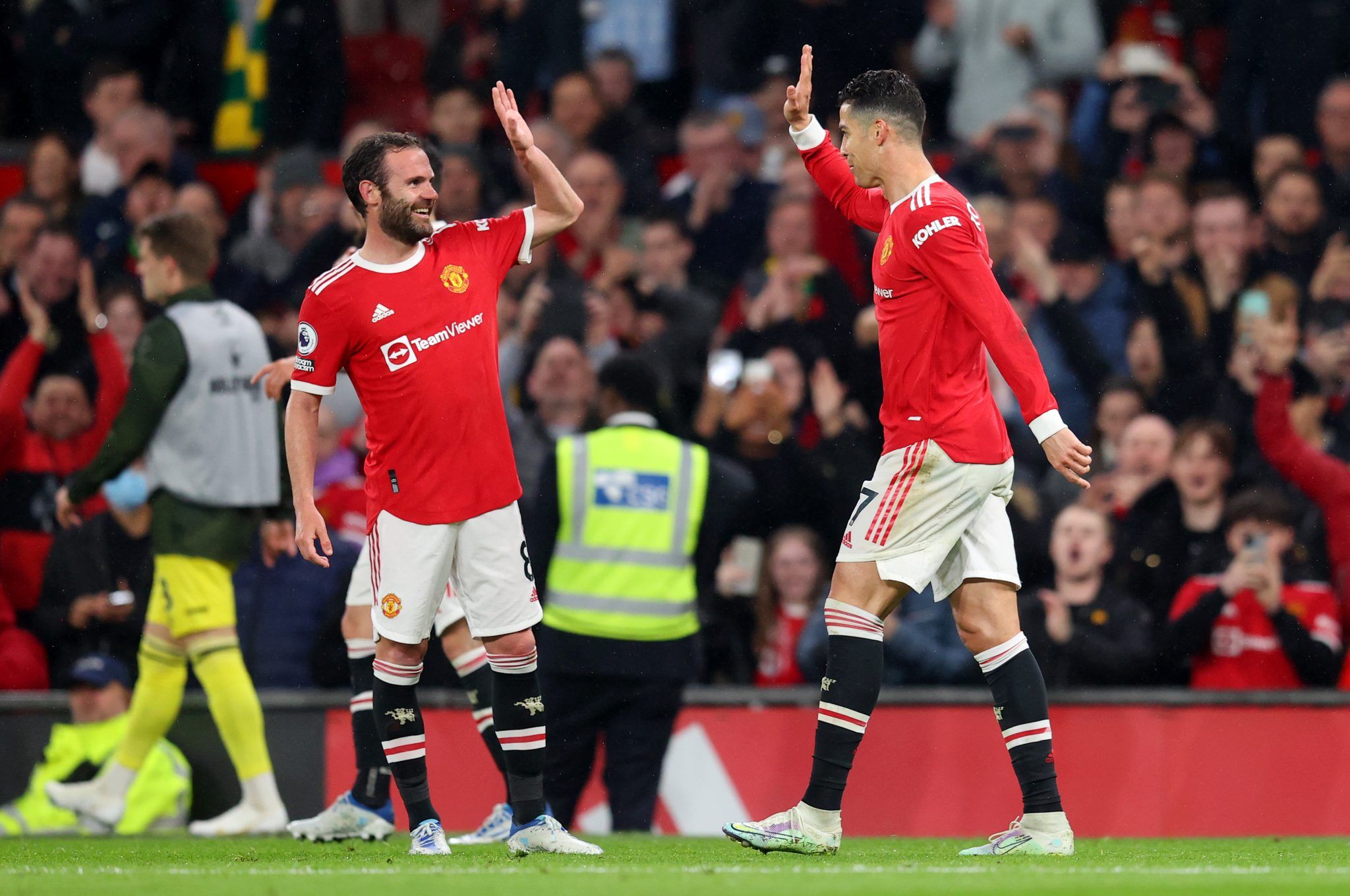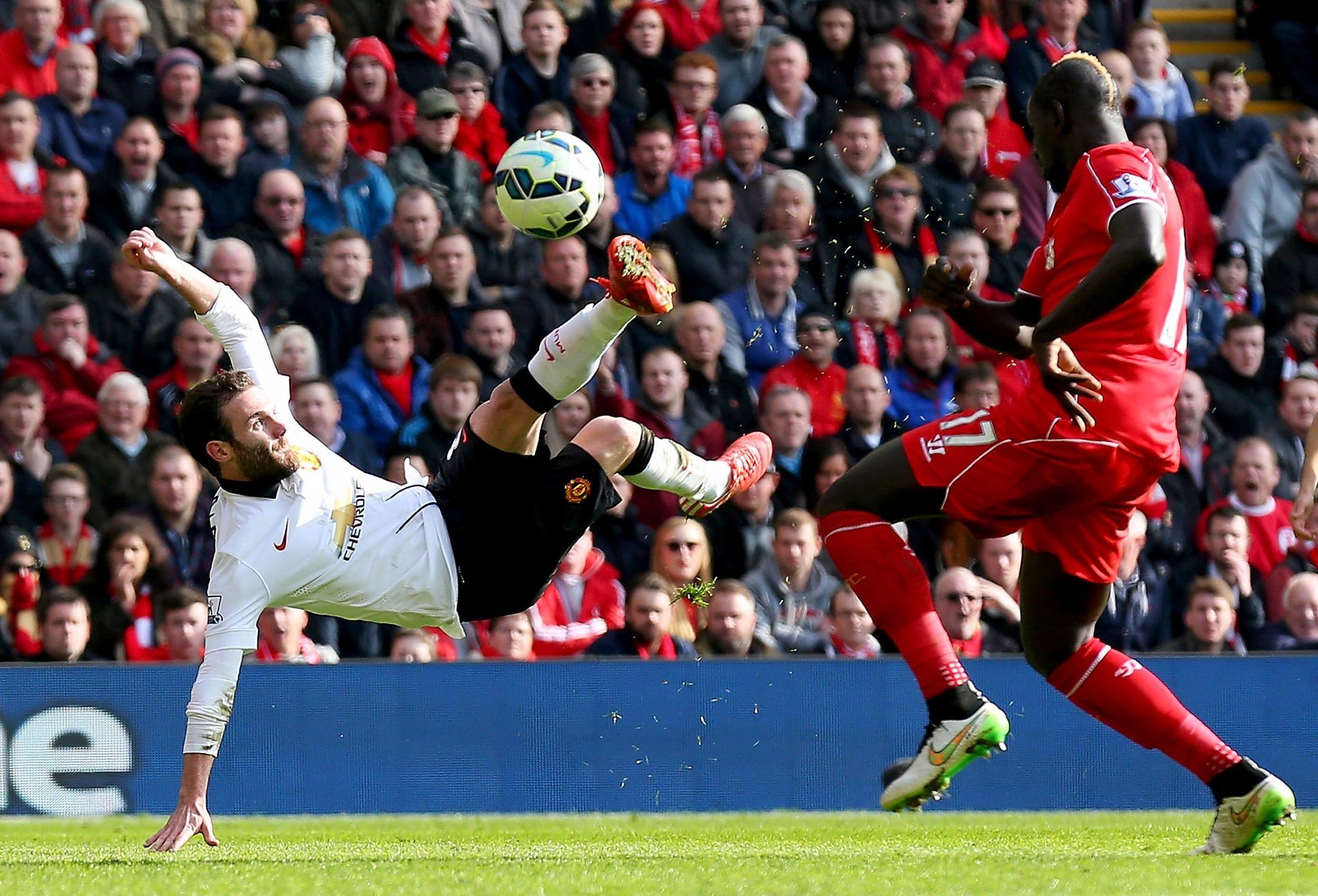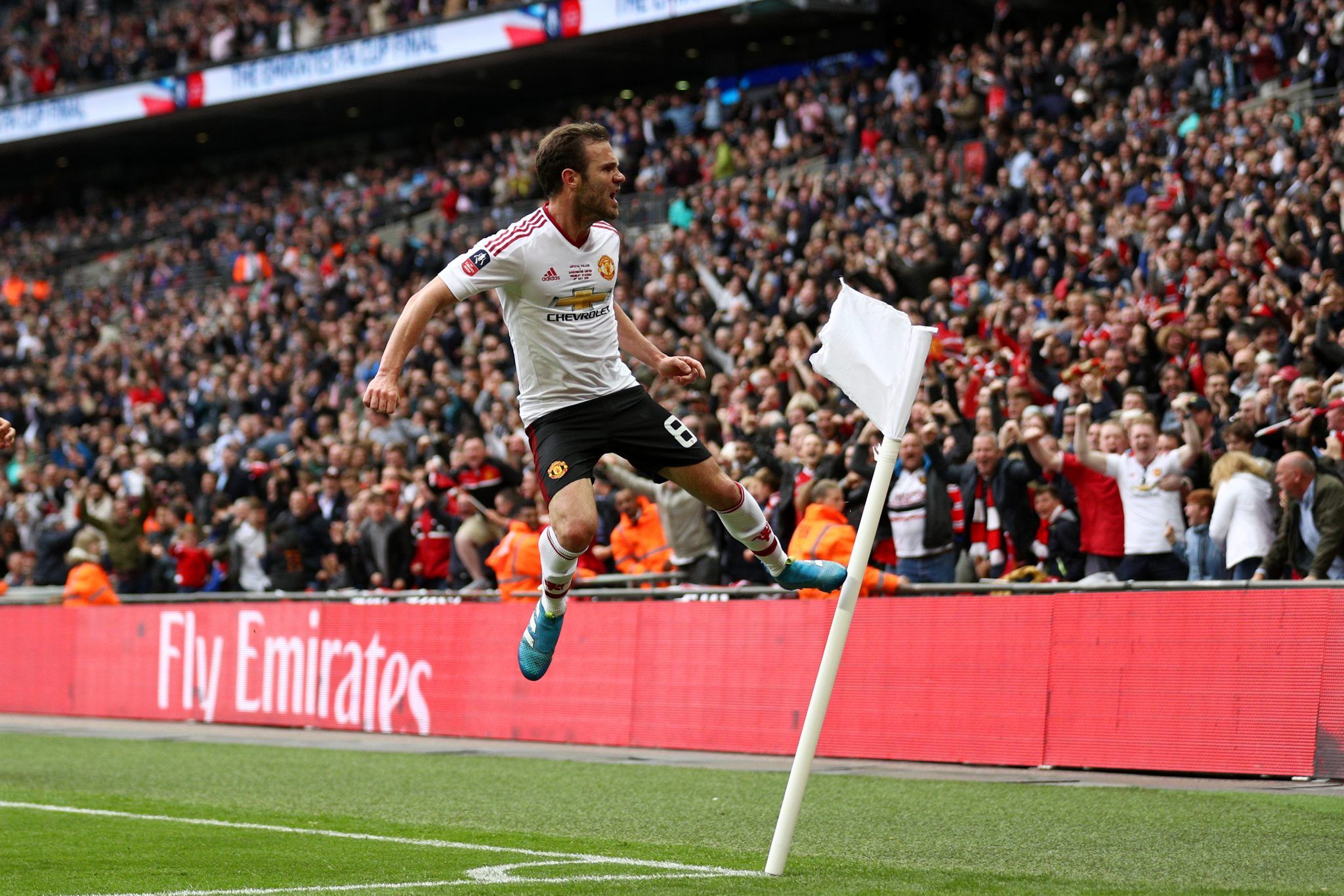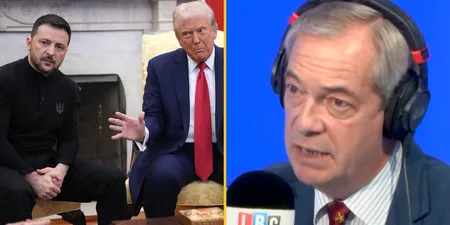Juan Mata’s Manchester United chapter is at its end and it’s impossible to escape the feeling that he deserved better…
There were moments at Old Trafford on Monday night when it felt as if time had been turned back. Juan Mata, for much of the first-half against Brentford, ran the show.
There was the anticipation and clever movement; that ethereal touch and sharp eye for a quick pass a split second before anyone else on the field could see it. At times, he linked up brilliantly with Cristiano Ronaldo – to a point where you dared wonder how this wretched Manchester United season might have turned out had the pair combined more regularly.
It was a reminder of the Juan Mata of old: a fresher-faced, cleaner-shaven Mata, who first bubbled into our consciousness somewhere amidst that seemingly never-ending wave of technically brilliant, dainty little Spanish playmakers at the turn of the last decade. It felt like the version of the same footballer who dazzled on Chelsea’s run to a Champions League ten years ago, who, at just 22, was part of his country’s World Cup-winning squad.
The harsh truth, though, is that the days of World Cup finals and Champions League glory are now a long time ago. Mata is 34 and this is the end of his United chapter – very definitely a goodbye. Though Ralf Rangnick insisted otherwise, handing him a start felt like a sentimental decision. Few inside Old Trafford – if any at all – would have had any problem if that was the case.
As nice as it was to watch Mata roll back the years, it’s difficult to assess his time as a United player without experiencing a few pangs of regret, a nagging sense of what might have been. Of the many frustrations about United’s team in this post-Ferguson era, their failure to ever fully harness the Spaniard’s creative talents and make him the true focal point of their attack has been one of the more maddening aspects of it all.
His helicopter arrival all those years ago was brief cause for optimism midway through the dreariness of the David Moyes season. After a wretched start, it was supposed to symbolise a leap forward into an exciting new dawn. United were back to reassert themselves and here was their oven-ready playmaker to add some much-needed craft and jumpstart their misfiring frontline. A Champions League winner, a World Cup winner, Premier League-proven and approaching the peak years of his career. Surely a catalyst for better things?
Well, not quite.
Make no mistake about it, Mata has had wonderful moments in a United shirt. He has scored important goals in a cup final and, memorably, at Anfield. He is universally loved by the fanbase for doing so. And yet, from the very beginning, he’s rarely been guaranteed a starting berth, too often caught in the awkward middle ground of being too useful to get rid of yet not useful enough to play a more prominent role. You wonder what might have been had he arrived in a more settled period for United, if the club had some semblance of a long-term vision instead of lurching from one crisis to the next.
Moyes had gone before the helicopter propellor blades had stopped spinning. His replacement, Louis van Gaal, valued Mata for his intelligence and ability to adapt. Often, this meant shoehorning him into wider positions – a “false right-winger”, the Dutchman once described it – where his lack of pace and physicality stifled his creative influence on the team.
Under Jose Mourinho, who had deemed him surplus to his requirements while at Chelsea, there were fleeting good moments. Despite the Portuguese’s penchant for a robust, physically imposing spine to his teams, there were rare occasions where Mourinho deployed Mata off the striker – his best position. Not helped by United’s ponderous build-up play, however, he was again more commonly deployed in a wider position on the right.
Even before Mourinho was replaced by Ole Gunnar Solskjaer there was a feeling that, for factors beyond the control of United, Mata had already passed a point of no return. Gradually, the role of the more advanced, number ten-style playmaker has become less fashionable in European football with the rise in holding midfielders denying them the space to dictate play between the lines. If the window of opportunity for Mata to become anything vaguely resembling that kind of player at Old Trafford hadn’t already closed, the arrival of the more dynamic Bruno Fernandes slammed it shut and pulled down the blackout blind.
Mata is adored by United supporters, not just for what he has given on the pitch, but for the simple fact he is a decent human being. He has shown that throughout his time in Manchester, be it with his work for Common Goal or the generous amount of time he has offered supporters. Even after full-time on Monday, he waited in the rain outside the Old Trafford players’ entrance to sign autographs and pose for photographs for several minutes before finally leaving.
He will be fondly remembered, but those memories will also be tinged with a strong sense of what if. It will be hard not to think of the player he was, or how he has devoted the better years of his career to a team in a near constant state of flux. He deserved better.
These have been turbulent years at Old Trafford. It’s difficult not to view Juan Mata as one of the more unfortunate passengers of the post-Ferguson ride.







































